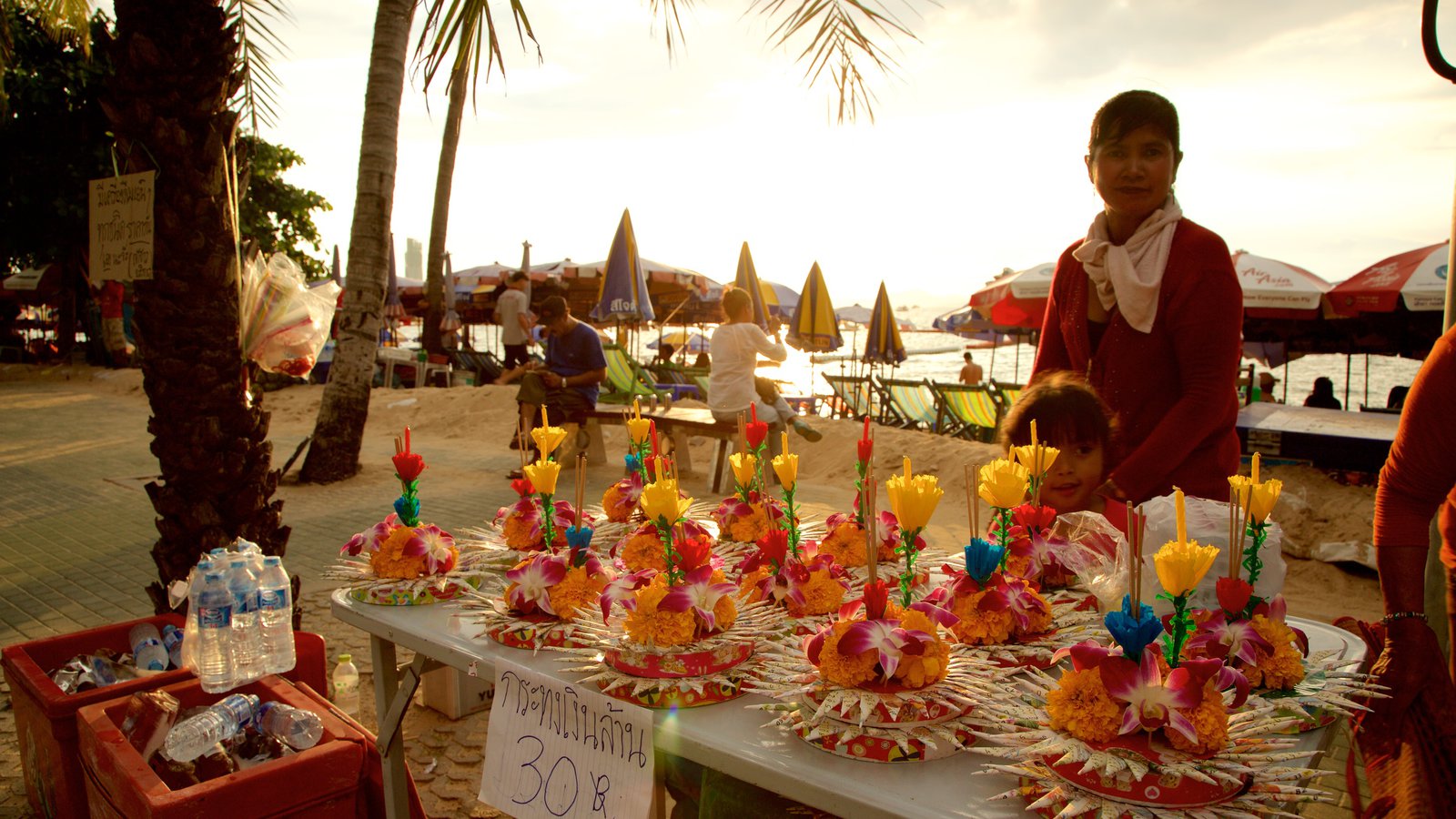What to Pack for Thailand and What to Buy Locally?
Thailand packing lists vary between travelers. We all have our own way of doing things on the road. But the time-tested mantra of “bring less, buy locally” holds very true when choosing what to pack for Thailand. Why carry something 8,000 miles across the Pacific when you can buy it for less once you arrive?
Without a doubt, overpacking will haunt you the entire trip. Avoid it at all costs. As travelers, we tend to go into survival mode when packing for the first visit to an “exotic” destination.
Running through what-if scenarios results in bags stuffed with first-aid items, secondary backups, etc.
Here’s the thing: Unless you’re planning to spend the trip hacking through a jungle, you’ll probably be within eyesight of a 7-Eleven minimart at all times in Thailand. Perhaps, two.
If that phone charger breaks, you’ll easily find another; no need to pack a backup. The English-speaking pharmacies sell everything needed for whatever ailment may arise — no prescription required. If it rains, someone selling an umbrella or poncho will probably already be asking if you want to buy one. You get the idea.
Thailand may be far from home, but the locals already have everything you need to survive and enjoy a memorable trip!
 Bring It or Buy It Locally?
Bring It or Buy It Locally?
Like most foreign arrivals, you’ll probably begin your visit to Thailand in Bangkok — land of endless shopping and cheap fakes. You’ll have plenty of opportunities to escape the heat of the day by exploring sprawling malls for bargains.
If you’re willing to allocate a day or so in Bangkok, you’ll find deals for useful items that can be used the rest of your trip. Obviously, you’ll want to save the serious shopping for just before you fly out. There’s no need to carry new purchases all over the country.
Rather than risk losing or breaking expensive sunglasses, sandals, bags, etc from home, you could buy them in Bangkok to help out the local economy.
Plus, picking through new choices unavailable at home is fun! Pack less clothing and plan to buy a good pair of cheap flip-flops/footwear once you arrive.
That being said, brands for some toiletries and other items may be unfamiliar, or the quality may be inferior. You’ll still want to consider bringing some items to Asia with you from home. For example, deodorant sold in Thailand often contains skin whiteners. Unless you want armpits to be peculiarly untanned compared to everywhere else, read ingredients or pack it from home!
Tip: If planning to visit Chiang Mai, wait to do souvenir shopping there. You’ll often find inexpensive handicrafts and unique items from local artisans there in the outdoor/weekend markets.

What Types of Clothing for Thailand?
Thailand is either warm or scorching hot, depending on what time of the year you visit. You’ll rarely be cold, other than when dealing with super-powered air conditioning on public transportation. Lightweight, quick-drying clothing is the way to go. You’ll find fun T-shirts for sale everywhere for US $5 or less.
Cheap laundry service is available everywhere. Laundry is typically charged by the weight and takes a full day to line dry, unless you pay extra for two-hour express service.
Tip: Although inexpensive, these laundry services often mix up clothing between customers. Count the number of pieces before dropping off laundry, and carefully check for missing items at pickup before you walk away.
Bring one jacket or warm item: Long-haul transportation such as night buses and trains really crank up the air conditioning. You’ll expect frost to form on windows at any time! A lightweight jacket could double as a rain jacket and keep you warm.
Pack Conservative Clothing: Avoid clothing with religious or potentially offensive themes. Although temples in tourist areas are increasingly more lax, you should show respect by covering shoulders and wearing long pants (not yoga pants).
 Which Shoes to Take?
Which Shoes to Take?
Leave those high-heels at home: The default footwear in Thailand is the ever-useful pair of flip-flop sandals.
As you can guess, cheap sandals are on offer everywhere in Thailand, but they may only last the duration of your trip. Going to dinner or -most- bars in flip-flops is acceptable. Only the more pretentious nightclubs or skybars may require closed-toe shoes. If you plan on doing some trekking, bring a pair of hiking sandals or lightweight hiking shoes.
You’ll be expected to leave your shoes outside of all temples as well as some restaurants, shops, and bars. Sandals without straps are easier to get on and off quickly. Pricey, branded sandals that stand out in the shoe pile have a greater chance of mysteriously walking away while you’re inside.

Packing First Aid
You can walk into any pharmacy in Thailand and purchase what you need — including antibiotics and under-the-counter drugs — without a prescription. Branding may be different than that in the United States, but pharmacists will be familiar with all major medications.
If you depend on daily medications, bring enough for the duration of your trip just in case. Keep a copy of the prescription when carrying large quantities of pills.
Tip: Well-known medications are often cheaper to purchase in Thailand, as are prescription glasses and contact lenses. Stock up before heading home!
Carrying Travel Documents
You’ll may want to prepare and carry the following documents with you:
2 copies of your passport (carried separately from your passport)
Travel insurance documents
Receipt/serial numbers for any traveler’s checks
Official-sized passport photos
Extra passport photos come in handy for visa applications if you wish to visit neighboring Laos or Cambodia. They’re also sometimes used for permits and other applications.

Carrying Money in Thailand
Diversifying your travel cash is important. Have at least two ways to access funds. Local ATMs are typically the best way to get local currency, although the transaction fee in Thailand has skyrocketed to US $6-7 per use. You should have U.S. dollars or traveler’s checks for backup in case the ATM network goes down.
U.S. dollars are still the best form of backup cash. Bring a mix of denominations in good condition. Dollars can be exchanged, or in some instances, spent directly. Visa prices are often quoted in U.S. dollars.
Credit cards are useful for paying hotels, dive shops, and tour agents, but you’ll almost always be charged a commission for paying with plastic. Opt to use cash when possible. Visa and Mastercard are the most commonly accepted.
Must-Have Items to Carry
Whether you purchase them locally or bring them from home, you’ll certainly want each of these essentials with you:
Sunscreen: Prices for sunscreen often reflect the fact that locals rarely use it.
Sunglasses: Sunglasses often get abused, so consider buying a cheap pair locally.
Mosquito Repellent: Dengue fever is a serious problem throughout Thailand. The best defense is to protect yourself from bites. Mosquito coils can be purchased everywhere; burn them while sitting on your porch or balcony.
Toilet Paper: You’ll find it on tables in restaurants but not always in the bathrooms!
LED Flashlight: Power outages are common in some places, particularly islands that rely on generator power.
Other Useful Items to Consider Bringing
Hand Sanitizer: Soap isn’t a guarantee, even in nice restaurants. You’ll certainly want some after your first squat toilet experience.
Power Adapter: Most of the power outlets in Thailand are universal now; they accept both the US-style flat-pronged plugs as well as the rounded European-style power plugs. To ensure that you can connect everywhere, consider bringing a universal power adapter and check the voltage ratings (Thailand uses a 220-volt system) on your devices/chargers. Anything that relies on USB charging or has a dual-voltage transformer should be fine.
Small Knife: You don’t need a 30-function survival knife, but you’ll want something for cutting the delicious local fruit. Just don’t leave it in a carry-on bag!
Electrolyte Drink Mixes: You’ll be drinking a lot of bottled water in the heat. Drink mixes can help replenish electrolytes lost in the extra humidity and can make water a little more interesting without adding sugar.
Guidebook: If nothing else, the maps and history of places will come in handy.
MP3 Player: Some music or earplugs will help you survive noisy transportation or neighbors who like to stay up late.
Small Padlock: Some budget hotels and bungalows allow you to use your own lock on the door. You’ll also want a padlock to use for lockers and luggage storage in some circumstances.
Items to Leave at Home
These inexpensive items can be purchased locally when you need them: Umbrella / poncho, Beach sarong, Snorkel gear, Beach bag, Aloe vera / after-sun lotion (or consider using the excellent local coconut oil instead!).
The following items will either be useless or may cause you trouble: water purifiers, GPS, weapon/pepper spray, portable DVD player, expensive jewelery or flashy bling that draws attention. Keep them off of your Thailand packing list!



















